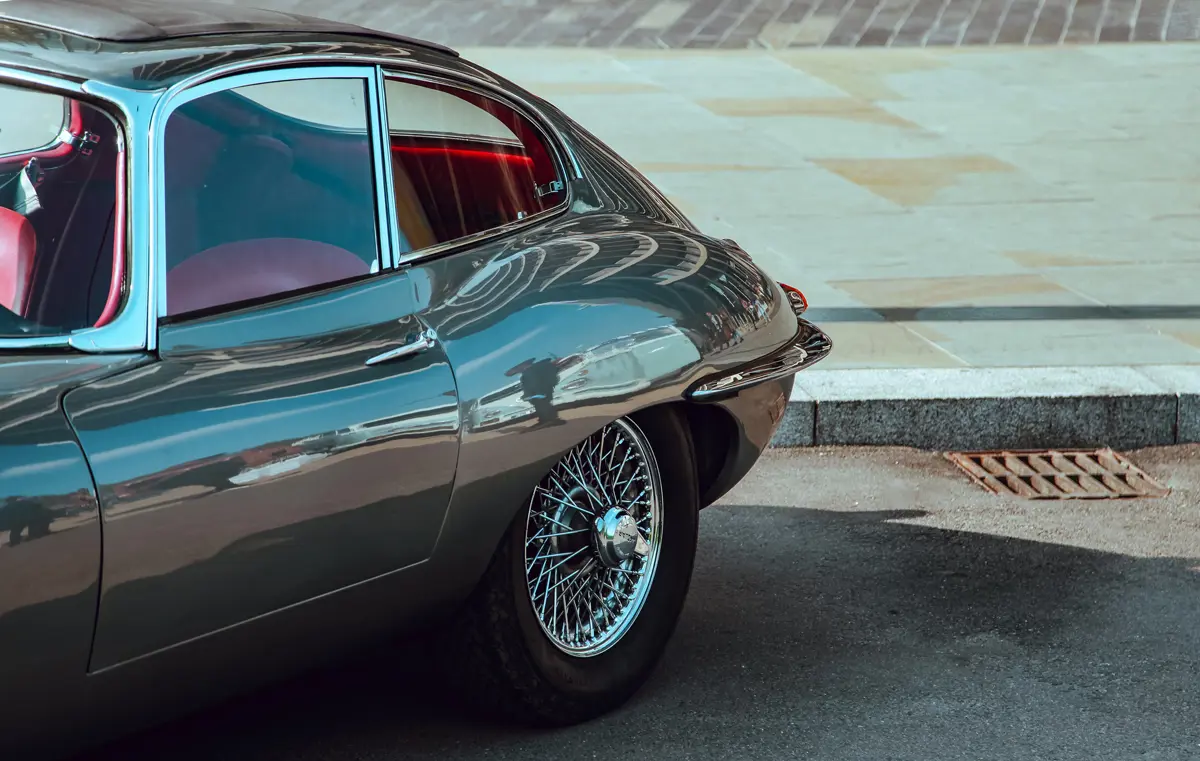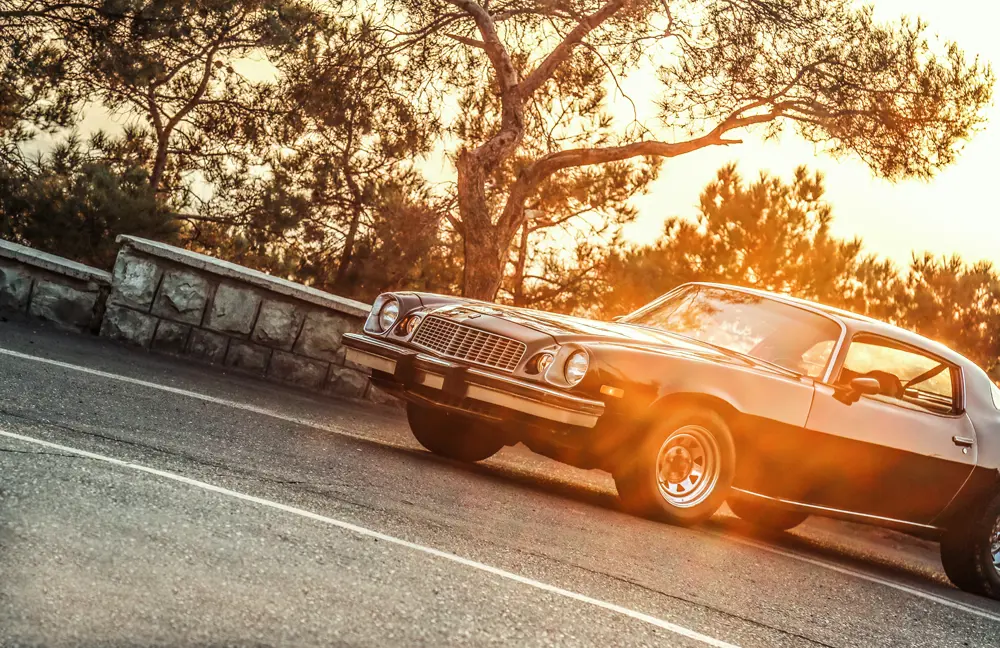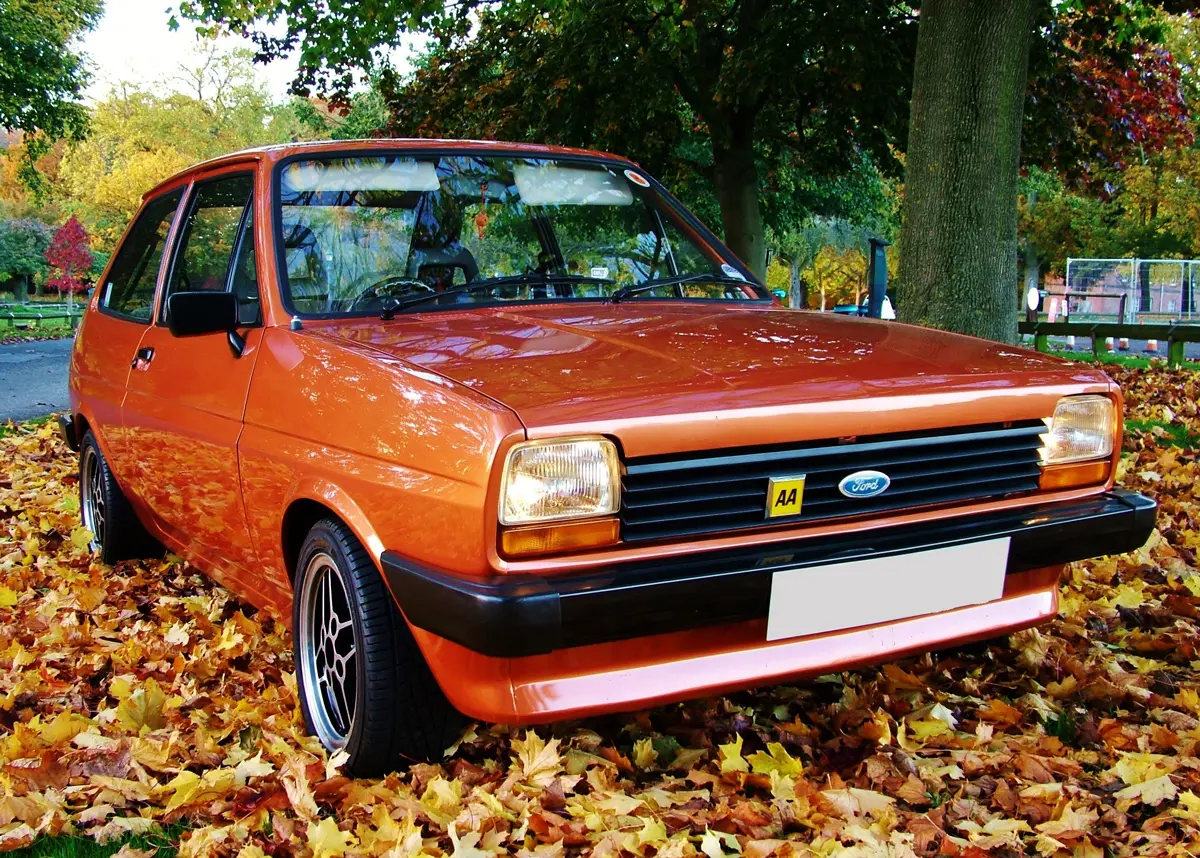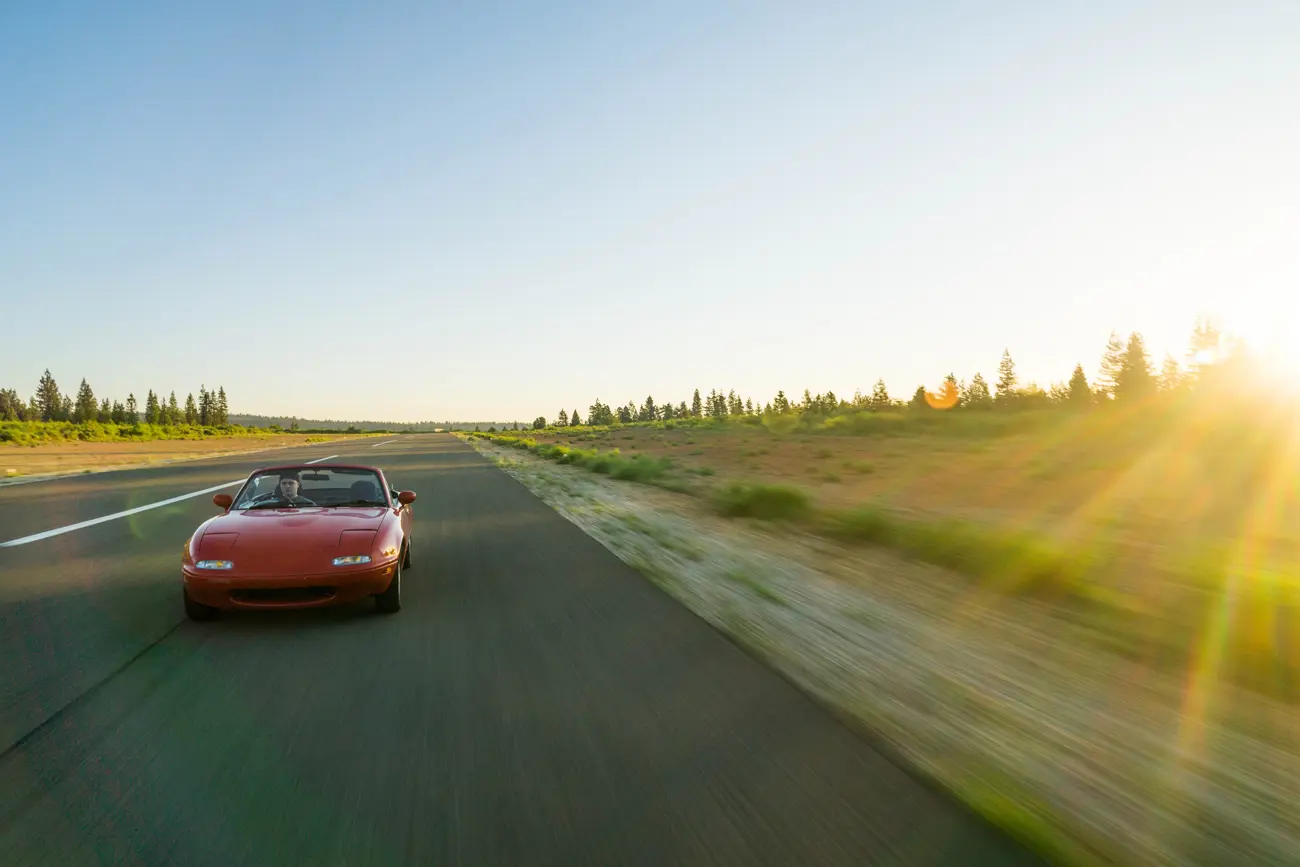How to take pictures of classic cars
13 April 2021

Classic car ownership really is a labour of love. And when you’ve spent many happy hours getting your classic running and looking just right, it’s a wonderful feeling to be able to take it out on the road for all to admire!
When you’ve gone to the effort of arranging classic car insurance, maintained your classic to perfection and finished those final restoration touches you’ll want to do something to celebrate.
But unless you’re attending a classic car show or rally you might feel your audience isn’t big enough. Limited as it is to those fellow motorists who were just lucky enough to spot you as you sped along the highway.
Many owners would love to be able to put together a nice portfolio of photos that they can leaf through at their leisure and share with other enthusiasts online. Or even, dare we say it, after selling their beloved classic.
But while it’s easy to take a photo of a car, chances are you’ll never be able to do it justice.
With that in mind we’ve put together this handy guide to some of the basics you need to understand in order to take the perfect picture of your classic. Making your car stand out from the crowd has never been easier.
Perfect pictures 101 – getting the basics right
Choose your perfect angle
Leafing through car catalogues and advertising ephemera it’s obvious there are a few basic go-to angles that will work for almost every car.
Therefore, a great starting point for any amateur photographer is to begin with a shot of the front three-quarters and rear three-quarters of the vehicle.
By taking a wide shot of the front or rear corner of the car you’ll see the front or rear face as well as along one side.
This will show off as much of the car as possible in one clean shot. And if you turn the front wheels slightly, you’ll get the face of the wheel angled towards you, too. What better way to display those highly polished vintage alloys and trims.
But that’s only the start! Every model will have other more flattering angles. You just need to find them. If you really want your shots to stand out, then you need to get away from the boringly familiar eye-level view. So, walk around the car and search for your alternative view.
A great tip for a high-impact shot is to get down low to the ground or grab a step ladder and go up high and gain a unique perspective on even the most snapped classic.

Don’t forget composition
While searching for the perfect angle take the time to consider the basic composition of the shot. For example, if there’s something in your way, treat it as foreground interest or look for symmetry and patterns to provide balance to the composition.
If you’re taking photos on a road or closed track, consider the surroundings as your picture frame for the car. Road markings, signs and other lines and objects are perfect for framing classics from motoring history.
There’s a reason why classic motoring magazine shots of cars on straight roads framed by trees are so popular – the framing totally transforms the shot.
About composition, if you’re taking photos for people to view on mobiles then don’t forget to get some vertical shots as well. While these are more complicated to compose (the subject is long rather than tall after all) they’re well worth the effort.
Watch for reflections
Whether or not you want reflections in your photo is entirely up to you and probably depends on what you’re trying to achieve in the photograph. But whatever your decision, you need to take them into account or be disappointed.
If you do want reflections, then start by getting the car freshly washed. Then angle your car to whatever it is you’re trying to reflect and start shooting. Sunsets, iconic buildings, scenic outlooks, and cool street lighting are all popular subjects for reflection.
Always be on the lookout for people and objects that might spoil the photo. It’s so painful when you think you’ve nailed the perfect shot, only to discover later that someone or something found its way into the background, or into the reflection. And if you’re struggling with your own reflection in the car’s body, then put your camera on a tripod and use a timer.
Often, particularly if you want to highlight a vehicle's body, reflections can be a nuisance (cars act like giant mirrors after all). While the solution can often be to move yourself or the car a couple of inches, a sure-fire option is to invest in a polariser or Neutral Density filter for your camera.
A polariser acts by redirecting the angle of the light entering the camera. By turning the polariser, you can remove any glare and get a much sharper image.
For a cheap and cheerful option, try using your phone’s camera with polarised sunglasses. You can achieve the same effect by holding them in front of the lens – what a great phone hack!
Find the perfect lighting conditions
As any pro photographer will tell you, lighting will make or break even the best shot. Even if you’ve got a polariser fitted, you need to avoid direct sunlight to get the best pictures. If shooting outside, then your best bet is to go for an overcast day or shoot in the shade.
The most popular time of day for photographers is during the so-called golden hour. This is the hour just after sunrise or just before sunset when the sun is at its lowest point in the sky. It’s this time that you get the softest most diffuse light and a great sense of atmosphere.
An interesting idea to make the best of a car’s polished surfaces and cool angles is to shoot directly into the light. Or perhaps use the Sun to your advantage by making your car into a silhouette against the bright background!
For the ultimate in lighting control that lets you highlight those stunning body lines, this combination of shooting techniques and a bit of clever Photoshop work can give amazing results. And it won’t break the bank on professional equipment!

Get the most out of those fantastic interiors
There are a huge variety of classic car interiors. And they’re all an important part of the unique driving experience of the make and model. However, capturing them just right can be a challenge.
If you’re shooting your interior outdoors, then the perfect conditions are grey and overcast. Just as when shooting the exterior, this will give you a soft, even light throughout the cabin.
If you’re taking a shot square on to the dash then ensure vents are square and well positioned, seats are at an even distance and the steering wheel isn’t obstructing too much of the dashboard. And just as with the outside, always be alive to any interesting details.
With a macro lens fitted, everyday car objects can become interesting and abstract images.
You’ll know your car inside and out but remember that not everyone will be so familiar with it.
From emblems, buttons and metallic flourishes to seat piping and unique textures and patterns, they all make great close-up shots. The ideal way to highlight the unique character of your classic.
If you’re looking for an interesting composition, then the interior is also full of possibilities. The curved edge of a door or window could provide a useful natural frame for the subject, or even the landscape outside. So, climb inside and get snapping.
Achieving dynamic driving shots
Classic cars aren’t just about incredible looks, they’re also about the driving experience. And if you want to capture a little bit of what this is like then you’ll need to practise a couple of photographic techniques. You’ll need a helper for both.
The first and most used technique is panning. This involves you standing next to the road while letting the car drive past. Follow the car with your lens in one smooth motion as it passes you and fire off a burst of shots.
This might take some trial and error and you’ll need to match your shutter speed to that of the car. The ideal shutter speed is anywhere between 1/30th of a second and 1/125th (the faster the car is moving the faster the shutter speed must be).
Try to keep the car in the same spot in the frame as you shoot to make it work.
Next up is the trickier technique of tracking. To do this successfully you’ll need to be in a car that’s travelling at the same speed as your classic. You want to use a slower shutter speed in this case.
A handy trick is to match the number to the car speed – so if you’re travelling at 30mph then set it to 1/30th. To get it right be sure to hold the camera steady and use continuous autofocus and burst mode.
A word of warning. Be careful when performing these techniques, never take chances with speeding cars. Also, if you’re getting someone else to drive your classic for the shot then check your classic car insurance to make sure you’re both covered.

Use locations to the best effect
Okay, so you want to take a ‘nice’ photo of your car. So, you drive to somewhere with pretty scenery and snap away.
That’s fine and we’re sure you’ll get some adequate photos. However, if you want to go one better, you need to think about the setting. After all, as every good storyteller knows, setting is everything.
From a high-performance sports car thrumming in the bright lights of a city at night to a burly off-road vehicle roaring up a dirt track choose a location that will suit the car and the story you want to tell.
Remember though, don’t allow the background to overpower the car. For example, parking too close to some trees or a crowd can easily distract from the beautiful shape of your classic.
If in doubt, park where you can see the open sky or where the scenery is further in the background – this will make the car stand out far more. Depending on where you’re shooting this might require some creative thinking to get the perfect shot – but that’s half the fun!
If you haven’t discovered the world of bokeh yet then you need to take a look – it could be the answer to your problems.
Bokeh uses a narrow depth-of-field effect to blur the background – thereby putting more emphasis on your classic. So, if you’re shooting in an area with a lot of distraction, using a bokeh effect can soften those background details.
There’s plenty of guidance online on how to achieve the effect using your camera. However, if you’ve got a decent smartphone then the simplest option might be to use it.
If you’ve got a flagship phone from the likes of Apple, Google, Samsung, or other manufacturers then bokeh is relatively simple to achieve. If you haven’t then you’ll need to download an app such as LightRoom for iOS or Android.
Protect your model motor with classic car insurance
The car really is the star in any photos involving a classic. And if you want your vintage model to keep looking its best, you’ll need the very best classic car insurance to protect it.
Lancaster is the broker of choice for thousands of UK classic car owners looking for the right cover at the right price. For over 35 years our team of insurance specialists have been making sure that as many classics as possible are kept on the road and properly protected.
Choosing cover from Lancaster entitles you to a range of benefits including:
- Up to 25% classic car club member discounts
- Static show cover
- Historic rally cover
- Limited mileage discounts
You’ll also have 24-hour access to our claims helpline and UK-based call centre.
Get a quote for classic car insurance today.
Policy benefits, features and discounts offered may very between insurance schemes or cover selected and are subject to underwriting criteria. Information contained within this article is accurate at the time of publishing but may be subject to change.
